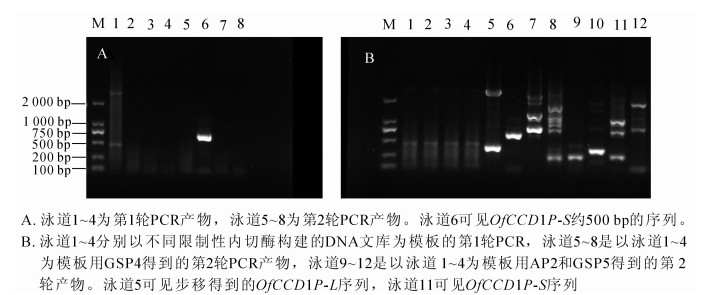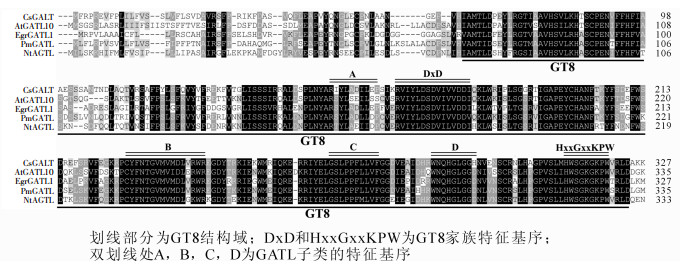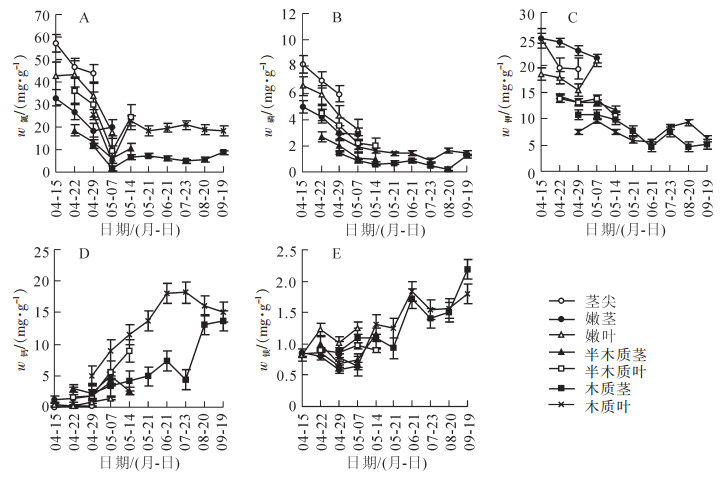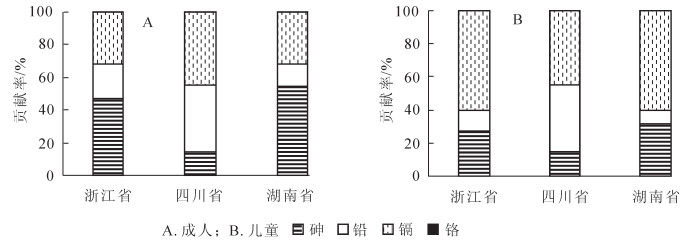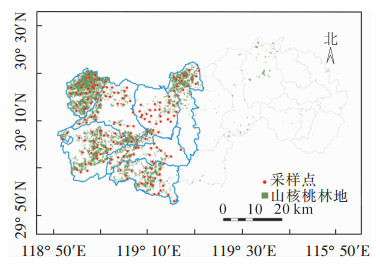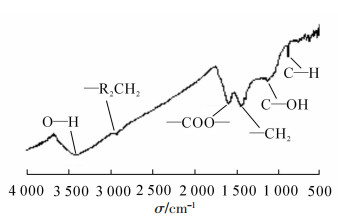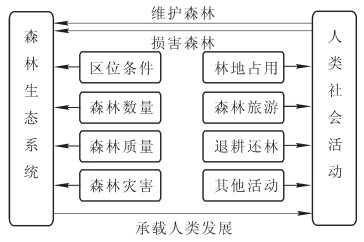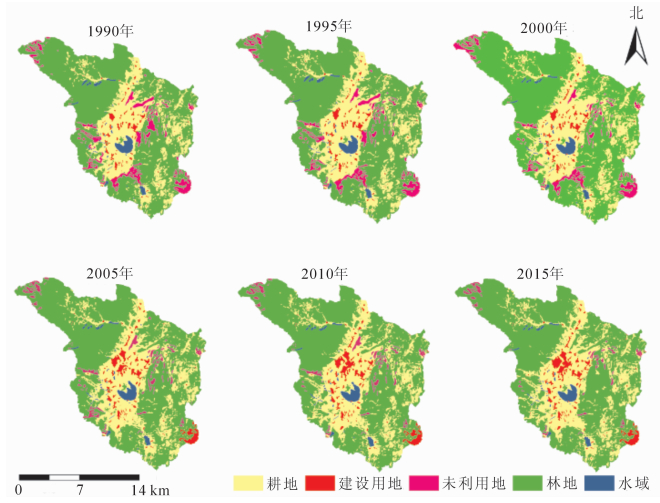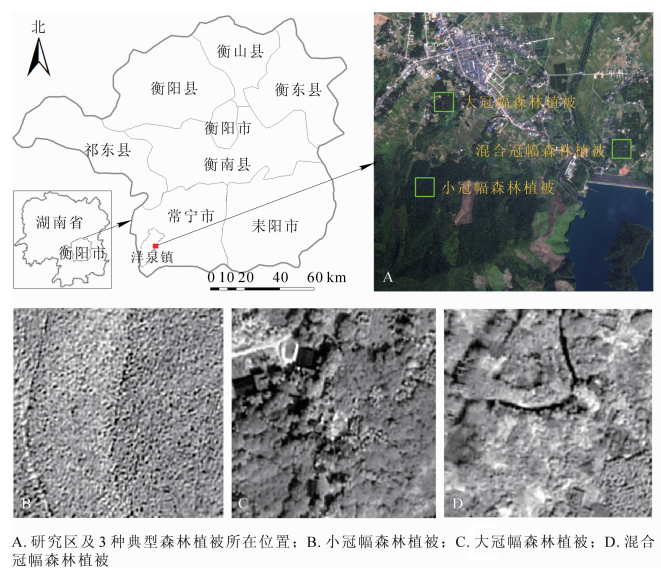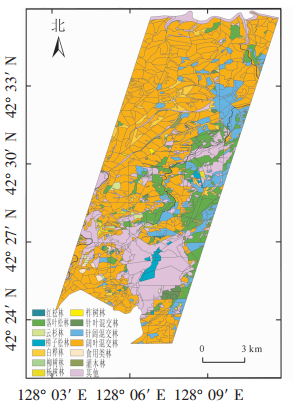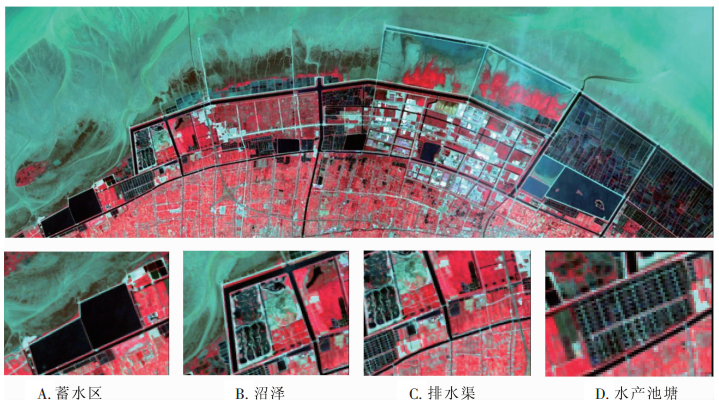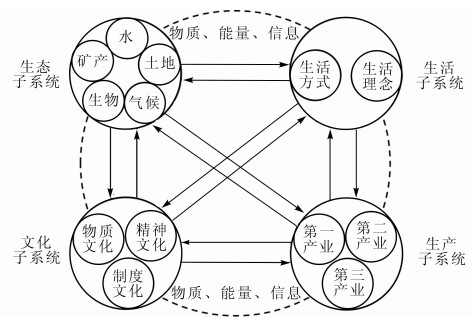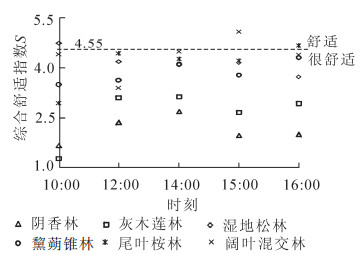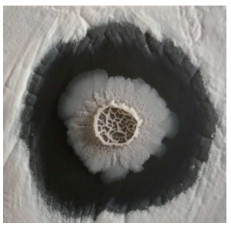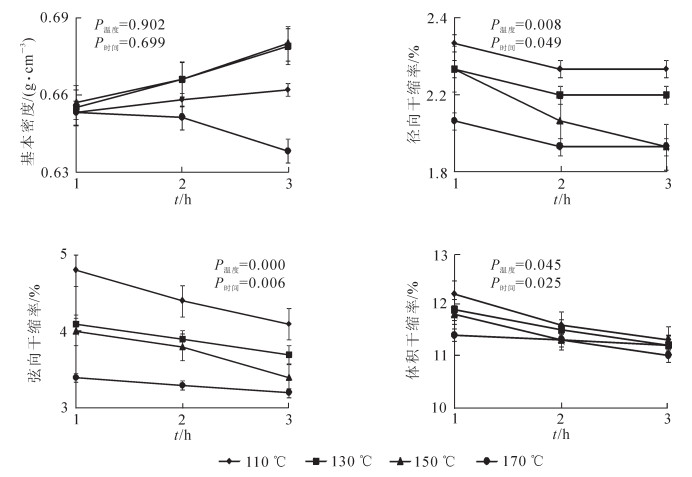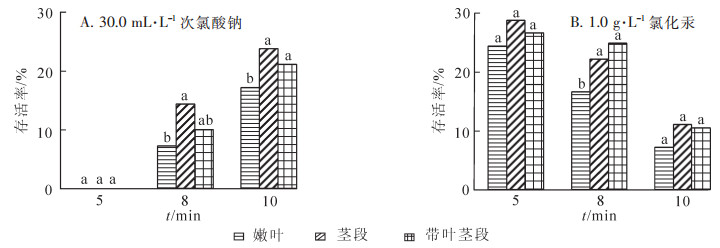2018 Vol. 35, No. 4
column
2018, 35(4): 581-588.
doi: 10.11833/j.issn.2095-0756.2018.04.001
Abstract:
Based on The Bamboo Forest Management Carbon Sequestration Project Methodology and improved project economic benefit evaluation model, this research conducted a quantitative evaluation of the economic benefits of CCER bamboo forest management carbon sequestration project and analyzed the sensitivity of the net present value under different scenarios. The results showed that the net present value of bamboo forest management carbon sequestration project was 195.675 2 million yuan in total, 6.522 5 million yuan per year and 137 200 yuan per hectare under the current market conditions, which was 42.05 per cent higher than that of the traditional bamboo forest management. Total carbon dioxide emission reduction was 249 658 t; the average annual emission reduction was 8 322 t; the amount of emission reduction per hectare was 175 t·hm-2. The net present value of the project emission reduction was 4.654 0 million yuan in total, 155 100 yuan per year and 3 300 yuan per hectare. The degree of sensitivity of the net present value of the project was bamboo price > discount rate > labor price > carbon price in the same rate of change scenarios. On the basis of the research findings, the relevant suggestions were put forward from three perspectives, namely, carbon price, farmer's income, and market environment, to carry out bamboo forest management carbon sequestration project better.
Based on The Bamboo Forest Management Carbon Sequestration Project Methodology and improved project economic benefit evaluation model, this research conducted a quantitative evaluation of the economic benefits of CCER bamboo forest management carbon sequestration project and analyzed the sensitivity of the net present value under different scenarios. The results showed that the net present value of bamboo forest management carbon sequestration project was 195.675 2 million yuan in total, 6.522 5 million yuan per year and 137 200 yuan per hectare under the current market conditions, which was 42.05 per cent higher than that of the traditional bamboo forest management. Total carbon dioxide emission reduction was 249 658 t; the average annual emission reduction was 8 322 t; the amount of emission reduction per hectare was 175 t·hm-2. The net present value of the project emission reduction was 4.654 0 million yuan in total, 155 100 yuan per year and 3 300 yuan per hectare. The degree of sensitivity of the net present value of the project was bamboo price > discount rate > labor price > carbon price in the same rate of change scenarios. On the basis of the research findings, the relevant suggestions were put forward from three perspectives, namely, carbon price, farmer's income, and market environment, to carry out bamboo forest management carbon sequestration project better.
2018, 35(4): 589-595.
doi: 10.11833/j.issn.2095-0756.2018.04.002
Abstract:
The glutathione S-transferase (GST) gene, an important player in plant stress response, could benefit Juglans regia, a widely planted walnut tree with important economic value that has been affected by adverse environmental factors. To better explore the resistance of walnut trees and to screen the genes related to stress resistance, a Tau subfamily GST gene from Juglans regia 'Xiangling' (JrGSTU23) was cloned, and its biological function was analyzed through bioinformatics and gene expression analysis. A qRT-PCR was applied to analyze expression profiles of JrGSTU23. Results showed that the open reading frame (ORF) of the JrGSTU23 gene was 684 bp, the coding polypeptide was 25.89 kDa, the amino acid was 227, and the theoretical isoelectric point was 5.20. The JrGSTU23 protein contained GST-Tau conserved domain as other homologous, such as the GSTs from Prunus persica, Populus trichocarpa, Ipomoea batatas, and Medicago truncatula, and shared close evolution with the Tau subfamily GST proteins from Musa acuminata and P. trichocarpa. The up-stream 2 000 bp promoter of JrGSTU23 was identified from the genome of J. regia; cis-elements included abiotic stress and hormone regulation relating motifs, such as the heat response element (HSE) and the drought response element(MBS). The qRT-PCR showed that the JrGSTU23 gene could be induced by plant hormone sabscisic acid (ABA), methyl jasmonate (MeJA), and salicylic acid (SA), and abiotic stresses of NaCl, PEG 6000, and 6℃. Also, expression profiles of the JrGSTU23 gene were specific in roots and leaves. Thus, the walnut JrGSTU23 gene which could be induced by different plant hormones and abiotic stresses and showed tissue specificity, could provide a potentially positive response to adverse environmental factors and hormone stresses in walnut.
The glutathione S-transferase (GST) gene, an important player in plant stress response, could benefit Juglans regia, a widely planted walnut tree with important economic value that has been affected by adverse environmental factors. To better explore the resistance of walnut trees and to screen the genes related to stress resistance, a Tau subfamily GST gene from Juglans regia 'Xiangling' (JrGSTU23) was cloned, and its biological function was analyzed through bioinformatics and gene expression analysis. A qRT-PCR was applied to analyze expression profiles of JrGSTU23. Results showed that the open reading frame (ORF) of the JrGSTU23 gene was 684 bp, the coding polypeptide was 25.89 kDa, the amino acid was 227, and the theoretical isoelectric point was 5.20. The JrGSTU23 protein contained GST-Tau conserved domain as other homologous, such as the GSTs from Prunus persica, Populus trichocarpa, Ipomoea batatas, and Medicago truncatula, and shared close evolution with the Tau subfamily GST proteins from Musa acuminata and P. trichocarpa. The up-stream 2 000 bp promoter of JrGSTU23 was identified from the genome of J. regia; cis-elements included abiotic stress and hormone regulation relating motifs, such as the heat response element (HSE) and the drought response element(MBS). The qRT-PCR showed that the JrGSTU23 gene could be induced by plant hormone sabscisic acid (ABA), methyl jasmonate (MeJA), and salicylic acid (SA), and abiotic stresses of NaCl, PEG 6000, and 6℃. Also, expression profiles of the JrGSTU23 gene were specific in roots and leaves. Thus, the walnut JrGSTU23 gene which could be induced by different plant hormones and abiotic stresses and showed tissue specificity, could provide a potentially positive response to adverse environmental factors and hormone stresses in walnut.
2018, 35(4): 596-603.
doi: 10.11833/j.issn.2095-0756.2018.04.003
Abstract:
Charge-coupled devices(CCDs) are involved in the degradation and biosynthesis pathways of carotenoid metabolism, and in Osmanthus fragrans, OfCCD1 plays an important role in the biosynthesis of scent compounds. In this study, primers were designed based on the transcriptome database of O. fragrans 'Yanhong Gui' and another reported OfCCD1 gene sequence. Two promoter sequences of OfCCD1, named OfCCD1P-L and OfCCD1P-S, were cloned by genome walking. Results showed that the two promoter sequences in length were 981 bp for OfCCD1P-L and 2 747 bp for OfCCD1P-S. Also, the light responsive element, heat stress element, abscisic acid (ABA) responsive element, and ethylene responsive element were found in the two promoter sequences which including four sequences:ACGT Adenine (A), cytosine (C), guanine (G), and thymine (T). The 35 S promoter in pBI121 was replaced by OfCCD1P-L and OfCCD1P-S. Afterward, the new vectors were transformed into Nicotiana tabacum leaves by Agrobacterium tumefaciens. The transient expression showed that the two cloned promoters could drive the expression of downstream reporter genes.
Charge-coupled devices(CCDs) are involved in the degradation and biosynthesis pathways of carotenoid metabolism, and in Osmanthus fragrans, OfCCD1 plays an important role in the biosynthesis of scent compounds. In this study, primers were designed based on the transcriptome database of O. fragrans 'Yanhong Gui' and another reported OfCCD1 gene sequence. Two promoter sequences of OfCCD1, named OfCCD1P-L and OfCCD1P-S, were cloned by genome walking. Results showed that the two promoter sequences in length were 981 bp for OfCCD1P-L and 2 747 bp for OfCCD1P-S. Also, the light responsive element, heat stress element, abscisic acid (ABA) responsive element, and ethylene responsive element were found in the two promoter sequences which including four sequences:ACGT Adenine (A), cytosine (C), guanine (G), and thymine (T). The 35 S promoter in pBI121 was replaced by OfCCD1P-L and OfCCD1P-S. Afterward, the new vectors were transformed into Nicotiana tabacum leaves by Agrobacterium tumefaciens. The transient expression showed that the two cloned promoters could drive the expression of downstream reporter genes.
2018, 35(4): 604-611.
doi: 10.11833/j.issn.2095-0756.2018.04.004
Abstract:
In Eucalyptus grandis, EgrGATL1 (Eucgr. I01882), a member of the glycosyltransferases 8 family belongs to the GATL subfamily, which contributes to the biosynthesis of cell wall components such as pectin and xylan, is classified as the GATL-a subgroup. In this study, the protein sequence of EgrGATL1 was analyzed and cis-elements were searched in the promoter sequence of this gene with MathInspector software. Real time fluorescence quantitative Polymerase Chain Reaction(qRT-PCR) method was used to evaluate expression pattern of EgrGATL1 under treatments of low temperatures (-8, -4, 0, 4, 8℃), time course at 4℃ (0, 2, 6, 12, 24, 48 h), drought, 100 μmol·L-1 MeJA, 200 mmol·L-1 NaCl and 100 μmol·L-1 ABA. In addition, a KEGG analysis was used to test co-expression genes of EgrGATL1 under treatment of time course at 4℃. The protein sequence analysis showed EgrGATL1 contains a typical GT8 domain. Results of expression in different tissues showed that expression of EgrGATL1 was higher in xylem and phloem than in roots and leaves. Low temperature (-8, -4, 0, 4, 8℃) and time course treatment at 4℃ both can promote the expression of EgrGATL1. With KEGG analysis, 25 genes co-expressed with EgrGATL1 can match to KEGG pathways, 11 genes belong to the sugar metabolism pathways and 8 genes were distributed to amino acid metabolism pathways. EgrGATL1 was also induced by drought and showed transient induction with the 100 μmol·L-1 MeJA treatment. And, there is no significant difference between the expression patterns of EgrGATL1 with treatments of 200 mmol·L-1 NaCl and 100 μmol·L-1 ABA. Thus, EgrGATL1 was possibly involved in cell wall remodeling and with activity of hormones such as ABA, thereby implying a possible role in low temperature, drought, and salinity stress responses in E. grandis.
In Eucalyptus grandis, EgrGATL1 (Eucgr. I01882), a member of the glycosyltransferases 8 family belongs to the GATL subfamily, which contributes to the biosynthesis of cell wall components such as pectin and xylan, is classified as the GATL-a subgroup. In this study, the protein sequence of EgrGATL1 was analyzed and cis-elements were searched in the promoter sequence of this gene with MathInspector software. Real time fluorescence quantitative Polymerase Chain Reaction(qRT-PCR) method was used to evaluate expression pattern of EgrGATL1 under treatments of low temperatures (-8, -4, 0, 4, 8℃), time course at 4℃ (0, 2, 6, 12, 24, 48 h), drought, 100 μmol·L-1 MeJA, 200 mmol·L-1 NaCl and 100 μmol·L-1 ABA. In addition, a KEGG analysis was used to test co-expression genes of EgrGATL1 under treatment of time course at 4℃. The protein sequence analysis showed EgrGATL1 contains a typical GT8 domain. Results of expression in different tissues showed that expression of EgrGATL1 was higher in xylem and phloem than in roots and leaves. Low temperature (-8, -4, 0, 4, 8℃) and time course treatment at 4℃ both can promote the expression of EgrGATL1. With KEGG analysis, 25 genes co-expressed with EgrGATL1 can match to KEGG pathways, 11 genes belong to the sugar metabolism pathways and 8 genes were distributed to amino acid metabolism pathways. EgrGATL1 was also induced by drought and showed transient induction with the 100 μmol·L-1 MeJA treatment. And, there is no significant difference between the expression patterns of EgrGATL1 with treatments of 200 mmol·L-1 NaCl and 100 μmol·L-1 ABA. Thus, EgrGATL1 was possibly involved in cell wall remodeling and with activity of hormones such as ABA, thereby implying a possible role in low temperature, drought, and salinity stress responses in E. grandis.
2018, 35(4): 612-617.
doi: 10.11833/j.issn.2095-0756.2018.04.005
Abstract:
As an important ornamental and landscape plant, Ilex verticillata has received increasing attention in flower markets of China. To foster breeding of new I. verticillata cultivars, genetic relationships between I. verticillata cultivars were analyzed by inter-simple sequence repeat (ISSR) markers. Four primers with polymorphism among I. verticillata cultivars were screened from 12 candidate ISSR primers. Results revealed a total of 63 bands with polymorphic bands accounting for 90.48% implying they could be used to identify relative relationships among different I. verticillata cultivars. The genetic similarity coefficient of the 12 I. verticillata cultivars varied from 0.54 to 0.87 indicating that the genetic relationships among I. verticillata were relatively close. Clustering of these genetic similarity coefficients showed that genetic relationships among cultivars were different with the relationship between I. verticillata 'Jim Dandy' and I. verticillata 'Cacapon' being the closest. This study will help lay an important theoretical and practical basis for genetic breeding of I. verticillata.
As an important ornamental and landscape plant, Ilex verticillata has received increasing attention in flower markets of China. To foster breeding of new I. verticillata cultivars, genetic relationships between I. verticillata cultivars were analyzed by inter-simple sequence repeat (ISSR) markers. Four primers with polymorphism among I. verticillata cultivars were screened from 12 candidate ISSR primers. Results revealed a total of 63 bands with polymorphic bands accounting for 90.48% implying they could be used to identify relative relationships among different I. verticillata cultivars. The genetic similarity coefficient of the 12 I. verticillata cultivars varied from 0.54 to 0.87 indicating that the genetic relationships among I. verticillata were relatively close. Clustering of these genetic similarity coefficients showed that genetic relationships among cultivars were different with the relationship between I. verticillata 'Jim Dandy' and I. verticillata 'Cacapon' being the closest. This study will help lay an important theoretical and practical basis for genetic breeding of I. verticillata.
2018, 35(4): 618-623.
doi: 10.11833/j.issn.2095-0756.2018.04.006
Abstract:
To investigate the biological mechanism of self and hybridization affinity in Dendrobium officinale, stigma characteristics and pollen tube growth after self-pollination and after intraspecific hybridization in D. officinale were studied using fluorescence microscopy. Results for self-pollination showed that the pollen germinated, and the pollen tube reached the style base close to the ovary at 1 h. The pollen tube entered the ovary after 4 h, and growth stopped after 8 h. The ovary atrophied after 72 h, and then the pollen tube disappeared. There was a slight difference between parents. For intraspecific hybridization, the pollen tube smoothly entered the ovary. Hypothetically, D. officinale was gametophytic and self-incompatible. These results could provide cytological evidence for studying self-incompatibility in D. officinale as well as a technical and theoretical basis for germplasm conservation, cross breeding, and selection of new cultivars of D. officinale.
To investigate the biological mechanism of self and hybridization affinity in Dendrobium officinale, stigma characteristics and pollen tube growth after self-pollination and after intraspecific hybridization in D. officinale were studied using fluorescence microscopy. Results for self-pollination showed that the pollen germinated, and the pollen tube reached the style base close to the ovary at 1 h. The pollen tube entered the ovary after 4 h, and growth stopped after 8 h. The ovary atrophied after 72 h, and then the pollen tube disappeared. There was a slight difference between parents. For intraspecific hybridization, the pollen tube smoothly entered the ovary. Hypothetically, D. officinale was gametophytic and self-incompatible. These results could provide cytological evidence for studying self-incompatibility in D. officinale as well as a technical and theoretical basis for germplasm conservation, cross breeding, and selection of new cultivars of D. officinale.
2018, 35(4): 624-634.
doi: 10.11833/j.issn.2095-0756.2018.04.007
Abstract:
To clarify the variable characteristics of mineral elements in the development of Xanthoceras sorbifolia shoots, key nutrient elements influencing the development of various parts were used. Mineral elements (N, P, K, Fe, Mn, Cu, Zn, Ca, Mg, and Na) in different parts of the shoots were measured using Autoanalyzer and atomic absorption spectrometers with new shoots of X. sorbifolia from different growth periods. Distribution regularities and dynamic change trendencies of different mineral elements in different parts of the new shoots of X. sorbifolia were then clarified using a factor analysis and correlation analysis. Results showed that:(1) N, P, K, Cu, Fe, and Zn in the shoots decreased during shoots development, and Ca, Mg, Na, and Mn in the shoots increased. (2) Mineral elements in stem tips close to young leaves was always higher than young leaves. (3) Except on May 7th, N, P, Fe, and Mn in leaves were higher than stems. No significant differences were found for Na among stem tips, stems, and leaves. (4) Contents of Mg, Zn, and Cu in leaves at the early stage of shoot growth were higher than in stems, but at the later growing stage were lower. At the early stage, K and Ca content in stems were higher than in leaves, and at the later stage were lower than in leaves. (5) The factor analysis showed that the contents of P, N, K, Cu, and Fe had important effects on the development of X. sorbifolia shoots. The main mineral elements affecting stem tip development were P, N, and Cu; affecting stem development were P, N, and K; and affecting leaf development were P and Cu. (6) The correlation analysis for uptake and accumlation of mineral elements showed significant positive correlations of N, P, K, Cu, and Zn (P < 0.05); whileas, Ca, Mg, Mn, and Na had significant negative correlations (P < 0.05). Also, P, N, K, Cu, and Fe had an important effect on the development of X. sorbifolia shoots. To ensure a nutritional balance and plant health, additions of P, N, K, Cu, Fe and other necessary mineral elements should be coordinated and reasonably applied as fertilizer, to achieve a rational and standardized fertilization program for X. sorbifolia.
To clarify the variable characteristics of mineral elements in the development of Xanthoceras sorbifolia shoots, key nutrient elements influencing the development of various parts were used. Mineral elements (N, P, K, Fe, Mn, Cu, Zn, Ca, Mg, and Na) in different parts of the shoots were measured using Autoanalyzer and atomic absorption spectrometers with new shoots of X. sorbifolia from different growth periods. Distribution regularities and dynamic change trendencies of different mineral elements in different parts of the new shoots of X. sorbifolia were then clarified using a factor analysis and correlation analysis. Results showed that:(1) N, P, K, Cu, Fe, and Zn in the shoots decreased during shoots development, and Ca, Mg, Na, and Mn in the shoots increased. (2) Mineral elements in stem tips close to young leaves was always higher than young leaves. (3) Except on May 7th, N, P, Fe, and Mn in leaves were higher than stems. No significant differences were found for Na among stem tips, stems, and leaves. (4) Contents of Mg, Zn, and Cu in leaves at the early stage of shoot growth were higher than in stems, but at the later growing stage were lower. At the early stage, K and Ca content in stems were higher than in leaves, and at the later stage were lower than in leaves. (5) The factor analysis showed that the contents of P, N, K, Cu, and Fe had important effects on the development of X. sorbifolia shoots. The main mineral elements affecting stem tip development were P, N, and Cu; affecting stem development were P, N, and K; and affecting leaf development were P and Cu. (6) The correlation analysis for uptake and accumlation of mineral elements showed significant positive correlations of N, P, K, Cu, and Zn (P < 0.05); whileas, Ca, Mg, Mn, and Na had significant negative correlations (P < 0.05). Also, P, N, K, Cu, and Fe had an important effect on the development of X. sorbifolia shoots. To ensure a nutritional balance and plant health, additions of P, N, K, Cu, Fe and other necessary mineral elements should be coordinated and reasonably applied as fertilizer, to achieve a rational and standardized fertilization program for X. sorbifolia.
2018, 35(4): 635-641.
doi: 10.11833/j.issn.2095-0756.2018.04.008
Abstract:
To investigate pollution levels and evaluate potential risks of arsenic (As), lead (Pb), cadmium (Cd), and chromium(Cr) in winter shoots of Phyllostachys edulis (Moso bamboo), concentrations and excesses above the standard rate for heavy metals (As, Pb, Cd, and Cr) in winter shoots of Moso bamboo collected from Zhejiang, Sichuan, and Hunan were measured and summarized. A single factor pollution index, comprehensive pollution index, and target hazard quotient (THQ) were applied to assess pollution levels and food safety of heavy metals in winter bamboo shoots. Also, proportions of each heavy metal in THQ were analyzed. Results showed that the content of As, Pb, Cd, and Cr exceeded allowable limits. Percentages exceeding allowable limits with winter Moso bamboo shoots in Zhejiang were As (0.6%), Pb (2.3%), Cd (1.1%), and Cr (0.6%); in Sichuan were Pb (46.0%) and Cd (45.3%); and in Hunan were As (2.5%), Pb (9.3%), and Cd (18.6%). The order for the comprehensive pollution index values was Sichuan > Hunan > Zhejiang. The order of heavy metal Hazard Index values for adults was Sichuan > Hunan > Zhejiang and for children was Hunan > Sichuan > Zhejiang. This study indicated that heavy metals caused no harm to adults even with the maximum acceptable daily intake of winter Moso bamboo shoots, but when children had more than 134 g of Hunan winter Moso bamboo shoots per day, a health risk could appear.
To investigate pollution levels and evaluate potential risks of arsenic (As), lead (Pb), cadmium (Cd), and chromium(Cr) in winter shoots of Phyllostachys edulis (Moso bamboo), concentrations and excesses above the standard rate for heavy metals (As, Pb, Cd, and Cr) in winter shoots of Moso bamboo collected from Zhejiang, Sichuan, and Hunan were measured and summarized. A single factor pollution index, comprehensive pollution index, and target hazard quotient (THQ) were applied to assess pollution levels and food safety of heavy metals in winter bamboo shoots. Also, proportions of each heavy metal in THQ were analyzed. Results showed that the content of As, Pb, Cd, and Cr exceeded allowable limits. Percentages exceeding allowable limits with winter Moso bamboo shoots in Zhejiang were As (0.6%), Pb (2.3%), Cd (1.1%), and Cr (0.6%); in Sichuan were Pb (46.0%) and Cd (45.3%); and in Hunan were As (2.5%), Pb (9.3%), and Cd (18.6%). The order for the comprehensive pollution index values was Sichuan > Hunan > Zhejiang. The order of heavy metal Hazard Index values for adults was Sichuan > Hunan > Zhejiang and for children was Hunan > Sichuan > Zhejiang. This study indicated that heavy metals caused no harm to adults even with the maximum acceptable daily intake of winter Moso bamboo shoots, but when children had more than 134 g of Hunan winter Moso bamboo shoots per day, a health risk could appear.
2018, 35(4): 642-648.
doi: 10.11833/j.issn.2095-0756.2018.04.009
Abstract:
Root-shoot ratio(RSR)is the basis for biomass distribution, and plays an important roles in material circulation of forest ecosystem. By collecting 608 data from 134 published literatures on RSR measurements of Cunninghamia lanceolata plantation, we used linear function to build the relationship between RSR and mean annual temperature, mean annual precipitation, stand density and stand age, respectively. The RSR increased with mean annual temperature, mean annual precipitation and stand density, decreased with stand age. Thus, we also used structural equation model to analysis the relationship between RSR and mean annual temperature, mean annual precipitation, stand density and stand age. The results showed that mean annual temperature, mean annual precipitation, stand density and stand age effect on RSR, which direct path coefficient were 0.515 (P < 0.01), 0.548 (P < 0.01), -0.462 (P < 0.01) and 0.201 (P < 0.01), respectively. The mean annual precipitation and stand age had also indirect effect on RSR, and indirect path coefficient were -0.308 (P < 0.01) and -0.082 (P < 0.05) in our structural equation model. The structural equation model analyses also indicated that mean annual temperature, mean annual precipitation, stand density and stand age explained 69% of the variation in RSR of C. lanceolata plantation.
Root-shoot ratio(RSR)is the basis for biomass distribution, and plays an important roles in material circulation of forest ecosystem. By collecting 608 data from 134 published literatures on RSR measurements of Cunninghamia lanceolata plantation, we used linear function to build the relationship between RSR and mean annual temperature, mean annual precipitation, stand density and stand age, respectively. The RSR increased with mean annual temperature, mean annual precipitation and stand density, decreased with stand age. Thus, we also used structural equation model to analysis the relationship between RSR and mean annual temperature, mean annual precipitation, stand density and stand age. The results showed that mean annual temperature, mean annual precipitation, stand density and stand age effect on RSR, which direct path coefficient were 0.515 (P < 0.01), 0.548 (P < 0.01), -0.462 (P < 0.01) and 0.201 (P < 0.01), respectively. The mean annual precipitation and stand age had also indirect effect on RSR, and indirect path coefficient were -0.308 (P < 0.01) and -0.082 (P < 0.05) in our structural equation model. The structural equation model analyses also indicated that mean annual temperature, mean annual precipitation, stand density and stand age explained 69% of the variation in RSR of C. lanceolata plantation.
2018, 35(4): 649-656.
doi: 10.11833/j.issn.2095-0756.2018.04.010
Abstract:
By analyzing the branch and leaf module characteristics, including branch number, branch length, branch angle, the ratio of branch diameter, branch ratio, leaf number and area of Debregeasia orientalis from the forest plant, forest edge cluster, river bank cluster and forest cluster in Laoban Mountain, Ya'an, the research tried to understood mechanism how the plant (population) survived and adapted to environment. The results showed that:(1) Under different habitats, the first class branch of D. orientalis had the largest number of branches. The branch lengths of D. orientalis in river bank cluster were higher than those in other habitats and the branch angles were small, forming a convergence and having a great space expansion capacity; but it had no third and fourth class branch. (2) The RBD3:2 was bigger and the branch ratio showed SBR3:4 < SBR1:2 < SBR2:3 under the same habitat. They indicated that the transportation of moisture and nutrient as well as the branch capacity between the second and third class branches were higher. (3) Leaf numbers changed with the branch numbers. The D. orientalis in forest edge had a lot of leaves, and their areas were larger than those in other habitats as well as river bank. The leaf areas showed the second class branch > the first class branch > the third class branch. (4) Forest edge cluster was more suitable for Debregeasia orientalis having an aggregation growth and the D. orientalis in river bank had an obvious effect on slope protection and soil fixation. It indicates that D. orientalis in different habitats has different response to environmental conditions including light as well as space, and we can take measures to obtain the maximum habitat resources, play better functions of soil and water conservation.
By analyzing the branch and leaf module characteristics, including branch number, branch length, branch angle, the ratio of branch diameter, branch ratio, leaf number and area of Debregeasia orientalis from the forest plant, forest edge cluster, river bank cluster and forest cluster in Laoban Mountain, Ya'an, the research tried to understood mechanism how the plant (population) survived and adapted to environment. The results showed that:(1) Under different habitats, the first class branch of D. orientalis had the largest number of branches. The branch lengths of D. orientalis in river bank cluster were higher than those in other habitats and the branch angles were small, forming a convergence and having a great space expansion capacity; but it had no third and fourth class branch. (2) The RBD3:2 was bigger and the branch ratio showed SBR3:4 < SBR1:2 < SBR2:3 under the same habitat. They indicated that the transportation of moisture and nutrient as well as the branch capacity between the second and third class branches were higher. (3) Leaf numbers changed with the branch numbers. The D. orientalis in forest edge had a lot of leaves, and their areas were larger than those in other habitats as well as river bank. The leaf areas showed the second class branch > the first class branch > the third class branch. (4) Forest edge cluster was more suitable for Debregeasia orientalis having an aggregation growth and the D. orientalis in river bank had an obvious effect on slope protection and soil fixation. It indicates that D. orientalis in different habitats has different response to environmental conditions including light as well as space, and we can take measures to obtain the maximum habitat resources, play better functions of soil and water conservation.
2018, 35(4): 657-663.
doi: 10.11833/j.issn.2095-0756.2018.04.011
Abstract:
Vegetation is an important part of island ecosystem. Due to the distinction of island vegetation from mainland vegetation, the existing mainland vegetation regionalization cannot be entirely applied to the islands. Hence island vegetation regionalization is necessary to provide scientific basis for the development and management of forest resources, protection of biodiversity and sustainable development of forest. Taking Putuo Island in Zhejiang Province as an example, and drawing on the vegetation investigation of 123 communities, survey of topography and landforms, long-term meteorological observation of 5 types micro-environments, this research put forward three principles that island vegetation regionalization should follow:the relative uniformity of geographical differences, the unification of vegetation types and flora, and the combination of biotic and abiotic factors. A system with three levels of indexes was developed:the primary indexes were mountain trend and climate; the secondary indexes were altitude and vegetation types; and the tertiary indexes were micro-topography and communities. According to this regionalization scheme, Putuo Island vegetation could be divided into two main zones including Southeast warm and humid zone and Northwest winter cold and dry zone, five secondary zones including forests, shrubs, grasses and etc., and thirteen tertiary zones. The research also described the basis of island vegetation regionalization, including the characteristics of microclimate, topography and landforms, community structure, and species components of each zone. Finally, the paper put forward the conservation measures for each zone, including thinning, nurturing, breeding, and natural succession. Putuo Island vegetation regionalization scheme filled the gap of island vegetation regionalization research, and provided references and theoretical guidance for the vegetation regionalization of other islands.
Vegetation is an important part of island ecosystem. Due to the distinction of island vegetation from mainland vegetation, the existing mainland vegetation regionalization cannot be entirely applied to the islands. Hence island vegetation regionalization is necessary to provide scientific basis for the development and management of forest resources, protection of biodiversity and sustainable development of forest. Taking Putuo Island in Zhejiang Province as an example, and drawing on the vegetation investigation of 123 communities, survey of topography and landforms, long-term meteorological observation of 5 types micro-environments, this research put forward three principles that island vegetation regionalization should follow:the relative uniformity of geographical differences, the unification of vegetation types and flora, and the combination of biotic and abiotic factors. A system with three levels of indexes was developed:the primary indexes were mountain trend and climate; the secondary indexes were altitude and vegetation types; and the tertiary indexes were micro-topography and communities. According to this regionalization scheme, Putuo Island vegetation could be divided into two main zones including Southeast warm and humid zone and Northwest winter cold and dry zone, five secondary zones including forests, shrubs, grasses and etc., and thirteen tertiary zones. The research also described the basis of island vegetation regionalization, including the characteristics of microclimate, topography and landforms, community structure, and species components of each zone. Finally, the paper put forward the conservation measures for each zone, including thinning, nurturing, breeding, and natural succession. Putuo Island vegetation regionalization scheme filled the gap of island vegetation regionalization research, and provided references and theoretical guidance for the vegetation regionalization of other islands.
2018, 35(4): 664-673.
doi: 10.11833/j.issn.2095-0756.2018.04.012
Abstract:
To identify soil fertility quality and its spatial distribution differences in Carya cathayensis stands and to guide farmers with fertilizer application, the main plantation area in Lin'an was selected for this study. In this study, differential GPS was used to locate and navigate in the field and a soil sample was collected within a radius of 10 m and a total of 189 soil samples were collected from 7 townships in Lin'an. Soil pH and status of nutrients (organic matter, available N, available P, and available K) were evaluated and their spatial distribution characteristics were revealed by geostatistics and Kriging interpolation. Results indicated that the average soil pH was 5.23 with 87% of the soil pH values in the range of 4-6 meaning soil was seriously acidic. The average organic matter content in the soil was 31.6 g·kg-1 with average available N of 155.40 mg·kg-1, available P of 14.04 mg·kg-1, and available K of 85.73 mg·kg-1. Soil organic matter, available N, and available K were abundant. According to the standard fertility grading for Zhejiang Soil (with first representing low content and fourth representing high content), soil organic matter was mainly in the third or fourth grades accounting for 54% of the soils and soil available N was in the third grade for 76% of the soils. Soil available K was more than 50 mg·kg-1 for 80% of the soils. Soil available P, however, was insufficient for 63% of the soils at less than 10 mg·kg-1 which meant the first or second grades. Coefficients of variation for soil nutrients were between 27.15% and 141.03% indicating that soil nutrients in the study area had different degrees of variability. Yield of C. cathayensis varied from town to town and had a spatial correspondence to soil nutrients. This study showed that stands were seriously acidic with soil organic matter, available N, and available K sufficient, but in most areas available P was insufficient to meet the growing needs of C. cathayensis.
To identify soil fertility quality and its spatial distribution differences in Carya cathayensis stands and to guide farmers with fertilizer application, the main plantation area in Lin'an was selected for this study. In this study, differential GPS was used to locate and navigate in the field and a soil sample was collected within a radius of 10 m and a total of 189 soil samples were collected from 7 townships in Lin'an. Soil pH and status of nutrients (organic matter, available N, available P, and available K) were evaluated and their spatial distribution characteristics were revealed by geostatistics and Kriging interpolation. Results indicated that the average soil pH was 5.23 with 87% of the soil pH values in the range of 4-6 meaning soil was seriously acidic. The average organic matter content in the soil was 31.6 g·kg-1 with average available N of 155.40 mg·kg-1, available P of 14.04 mg·kg-1, and available K of 85.73 mg·kg-1. Soil organic matter, available N, and available K were abundant. According to the standard fertility grading for Zhejiang Soil (with first representing low content and fourth representing high content), soil organic matter was mainly in the third or fourth grades accounting for 54% of the soils and soil available N was in the third grade for 76% of the soils. Soil available K was more than 50 mg·kg-1 for 80% of the soils. Soil available P, however, was insufficient for 63% of the soils at less than 10 mg·kg-1 which meant the first or second grades. Coefficients of variation for soil nutrients were between 27.15% and 141.03% indicating that soil nutrients in the study area had different degrees of variability. Yield of C. cathayensis varied from town to town and had a spatial correspondence to soil nutrients. This study showed that stands were seriously acidic with soil organic matter, available N, and available K sufficient, but in most areas available P was insufficient to meet the growing needs of C. cathayensis.
2018, 35(4): 674-683.
doi: 10.11833/j.issn.2095-0756.2018.04.013
Abstract:
To assess the impacts of tobacco stalk biochar on tobacco (Nicotiana tabacum) growth and leaf yield, soil properties and metal immobilization in soil, and non-bioavailability to plants in a soil contaminated with Cu, Pb, and Cd, a pot experiment with biochar application rates of 0, 20, 40, and 80 g·kg-1 was conducted in Pingshan Experimental Ground in Zhejiang A&F University in 2016. And the biochar was mixed with 4 kg soil filled into plastic pots in a randomized design with 4 replications per treatment. Results compared to the control with no biochar additions, showed increases in soil pH, soil fertility, and soil enzyme activity indices as well as a decrease in soil heavy metal bioavailability with increasing application of biochar from 20 g·kg-1 to 80 g·kg-1. With a biochar application rate to the soil of 80 g·kg-1, content of soil organic matter and soil available P increased significantly (P < 0.05) (2.0 and 3.4 times, respectively), and the geometric mean of enzyme activities (GMea) also significantly increased (P < 0.05) (24.8%). Additionally, 40 g·kg-1 of biochar added to the soil led to the highest immobilization effect with decreases on Cu (33.7%) and Pb (29.5%) in the soil. Furthermore, with addition of biochar to the soil both number of tobacco leaves and foliar biomass increased significantly (P < 0.05). With a biochar application rate of 40 g·kg-1 to the soil, foliar fresh biomass was highest at nearly 50% higher than the control. At the same application rate of biochar to soil (40 g·kg-1), Cu and Cd concentrations in tobacco leaves significantly decreased (P < 0.05) to the lowest level. Thus, it may be feasible to use biochar derived from tobacco stalk waste to remediate metal-contaminated soils which can then be re-used for tobacco cultivation, and based on this study, 4% would be a suitable application rate for the biochar.
To assess the impacts of tobacco stalk biochar on tobacco (Nicotiana tabacum) growth and leaf yield, soil properties and metal immobilization in soil, and non-bioavailability to plants in a soil contaminated with Cu, Pb, and Cd, a pot experiment with biochar application rates of 0, 20, 40, and 80 g·kg-1 was conducted in Pingshan Experimental Ground in Zhejiang A&F University in 2016. And the biochar was mixed with 4 kg soil filled into plastic pots in a randomized design with 4 replications per treatment. Results compared to the control with no biochar additions, showed increases in soil pH, soil fertility, and soil enzyme activity indices as well as a decrease in soil heavy metal bioavailability with increasing application of biochar from 20 g·kg-1 to 80 g·kg-1. With a biochar application rate to the soil of 80 g·kg-1, content of soil organic matter and soil available P increased significantly (P < 0.05) (2.0 and 3.4 times, respectively), and the geometric mean of enzyme activities (GMea) also significantly increased (P < 0.05) (24.8%). Additionally, 40 g·kg-1 of biochar added to the soil led to the highest immobilization effect with decreases on Cu (33.7%) and Pb (29.5%) in the soil. Furthermore, with addition of biochar to the soil both number of tobacco leaves and foliar biomass increased significantly (P < 0.05). With a biochar application rate of 40 g·kg-1 to the soil, foliar fresh biomass was highest at nearly 50% higher than the control. At the same application rate of biochar to soil (40 g·kg-1), Cu and Cd concentrations in tobacco leaves significantly decreased (P < 0.05) to the lowest level. Thus, it may be feasible to use biochar derived from tobacco stalk waste to remediate metal-contaminated soils which can then be re-used for tobacco cultivation, and based on this study, 4% would be a suitable application rate for the biochar.
2018, 35(4): 684-694.
doi: 10.11833/j.issn.2095-0756.2018.04.014
Abstract:
To evaluate forest ecosystem security, this study improved on the traditional "pressure-state-response" (PSR) model and established an index system that included two kinds of indicators:forest carrying capacity and social pressure. Based on samples of 129 counties in Yunnan Province, the fuzzy matter-element method was used to evaluate forest ecological security in the four years of 2000, 2005, 2010, and 2015. To dynamically analyze the temporal and spatial variation of forest ecological security, a spatial correlation analysis technology was introduced and the global Moran index was used. Results revealed that (1) the areas with the highest forest ecological security index level were generally distributed in the west and south of Yunnan; whereas, areas with the worst index level were located in the northeast and southeast. (2) Average values for the forest ecological security index in the four years were 0.353 4 for 2000, 0.377 9 for 2015, 0.311 4 for 2010, and 0.458 7 for 2015 generally showing an upward progression. The average decline in 2010 could mainly be due to the rapid growth of GDP. (3) From a time perspective, 99.20% of the counties in Yunnan showed a clear upward progression in the ecological security index with Hekou, Pingbian, and Honghe, national key ecological functional areas in the southern part of Yunnan, having the greatest improvement. (4) For spatial correlation, the global Moran index in the four years measured was P < 0.01 with the counties of Yunnan showing strong agglomeration with the forest ecological security index. In the above analysis, the High-High agglomeration counties, generally distributed in western and southern Yunnan, accounted for 11.63%, and the Low-Low agglomeration counties, mainly distributed in southeast and northeast Yunnan, accounted for 10.85%. Thus, large scale development should be restricted in Low-Low agglomeration counties with ecological restoration being carried out based on afforestation and returning farmland to forests, and High-High agglomeration counties could relax development restrictions appropriately without destroying the ecological conditions.
To evaluate forest ecosystem security, this study improved on the traditional "pressure-state-response" (PSR) model and established an index system that included two kinds of indicators:forest carrying capacity and social pressure. Based on samples of 129 counties in Yunnan Province, the fuzzy matter-element method was used to evaluate forest ecological security in the four years of 2000, 2005, 2010, and 2015. To dynamically analyze the temporal and spatial variation of forest ecological security, a spatial correlation analysis technology was introduced and the global Moran index was used. Results revealed that (1) the areas with the highest forest ecological security index level were generally distributed in the west and south of Yunnan; whereas, areas with the worst index level were located in the northeast and southeast. (2) Average values for the forest ecological security index in the four years were 0.353 4 for 2000, 0.377 9 for 2015, 0.311 4 for 2010, and 0.458 7 for 2015 generally showing an upward progression. The average decline in 2010 could mainly be due to the rapid growth of GDP. (3) From a time perspective, 99.20% of the counties in Yunnan showed a clear upward progression in the ecological security index with Hekou, Pingbian, and Honghe, national key ecological functional areas in the southern part of Yunnan, having the greatest improvement. (4) For spatial correlation, the global Moran index in the four years measured was P < 0.01 with the counties of Yunnan showing strong agglomeration with the forest ecological security index. In the above analysis, the High-High agglomeration counties, generally distributed in western and southern Yunnan, accounted for 11.63%, and the Low-Low agglomeration counties, mainly distributed in southeast and northeast Yunnan, accounted for 10.85%. Thus, large scale development should be restricted in Low-Low agglomeration counties with ecological restoration being carried out based on afforestation and returning farmland to forests, and High-High agglomeration counties could relax development restrictions appropriately without destroying the ecological conditions.
2018, 35(4): 695-704.
doi: 10.11833/j.issn.2095-0756.2018.04.015
Abstract:
To better understand the evolution of basin landscapes and to protect plateau lakes effectively, Jianhu Lake Basin in northwestern Yunnan Province was chosen as a study area. Based on data from six Landsat images for Jianhu Basin from 1990 to 2015 and data from eight Landsat images for Jianhu Lake from 1974 to 2015, several landscape indices with Fragstats using Arc GIS operational platforms were calculated and SPSS software was used to analyze the relationship between landscape patterns and landscape shapes of Jianhu Lake. Results showed that (1) in the 25 years from 1990 to 2015, significant increases in building and arable land areas, and significant decreases in water areas and unused land areas occurred; whereas, changes in forest land areas were small. Among these changes, water areas decreased 93.51 hm2 and unused land areas decreased 2 664.99 hm2. Arable land areas increased 1 038.42 hm2, forest land areas increased 450.81 hm2, and residential lands increased 1 269.27 hm2. (2) Also, in the 25 years from 1990 to 2015, landscape indices, such as number of patches, patch density, and contagion index, increased separately 193, 0.09 and 0.60, but Shannon's Diversity Index decreased 0.05. (3) Overall, the water bodies of Jianhu Lake Basin from 504.47 hm2 in 1974 to 451.72 hm2 in 2015. Landscape shapes in the Jianhu Lake Basin have become more complex, in particular, the river mouth shape of the Jinlong River has drastically changed. From 1974 to 2015 the centroid of Jianhu Lake Basin has also shifted to the southwest by 113.92 m. This work showing degree of landscape fragmentation and contagion levels as well as the effect of human activities, such as land reclamation from the lake and acquiring building land around the lake, could provide a theoretical basis for basin landscape optimization and scientific protection of the Jianhu Lake Basin.
To better understand the evolution of basin landscapes and to protect plateau lakes effectively, Jianhu Lake Basin in northwestern Yunnan Province was chosen as a study area. Based on data from six Landsat images for Jianhu Basin from 1990 to 2015 and data from eight Landsat images for Jianhu Lake from 1974 to 2015, several landscape indices with Fragstats using Arc GIS operational platforms were calculated and SPSS software was used to analyze the relationship between landscape patterns and landscape shapes of Jianhu Lake. Results showed that (1) in the 25 years from 1990 to 2015, significant increases in building and arable land areas, and significant decreases in water areas and unused land areas occurred; whereas, changes in forest land areas were small. Among these changes, water areas decreased 93.51 hm2 and unused land areas decreased 2 664.99 hm2. Arable land areas increased 1 038.42 hm2, forest land areas increased 450.81 hm2, and residential lands increased 1 269.27 hm2. (2) Also, in the 25 years from 1990 to 2015, landscape indices, such as number of patches, patch density, and contagion index, increased separately 193, 0.09 and 0.60, but Shannon's Diversity Index decreased 0.05. (3) Overall, the water bodies of Jianhu Lake Basin from 504.47 hm2 in 1974 to 451.72 hm2 in 2015. Landscape shapes in the Jianhu Lake Basin have become more complex, in particular, the river mouth shape of the Jinlong River has drastically changed. From 1974 to 2015 the centroid of Jianhu Lake Basin has also shifted to the southwest by 113.92 m. This work showing degree of landscape fragmentation and contagion levels as well as the effect of human activities, such as land reclamation from the lake and acquiring building land around the lake, could provide a theoretical basis for basin landscape optimization and scientific protection of the Jianhu Lake Basin.
2018, 35(4): 705-715.
doi: 10.11833/j.issn.2095-0756.2018.04.016
Abstract:
Magnolia wufengensis is a new species in Yulania subgenus, found in Wufeng County, Hubei Province a few years ago, with a tall form and totally red flowers. The species has a high aesthetic value, could be planted as an ornamental tree for horticulture and city landscapes. To introduce M. wufengensis scientifically and successfully, suitable regions in China must be found. Using the principle of Climatic Similarity for introducing plants to a region, nine climatic factors(mean annual temperature, mean temperature of the hottest month, mean temperature of the coldest month, extreme maximum temperature, extreme minimum temperature, mean annual precipitation, mean annual wind speed, mean relative humidity, and duration of sunshine), and accordance to the principles of comprehensiveness, detailedness and representativeness, 196 meteorological observation stations in 32 provinces (cities and autonomous regions) of China were selected to study. The methods of fuzzy mathematics in the Euclidean distance of a fuzzy similarity priority ratio together with the Analytic Hierarchy Process (AHP) were adopted to determine potential climatically adaptive regions for introduction of M. wufengensis. Results showed suitable regions as the Huanghuai Plain, the middle and lower reaches of the Yangtze River Plain, the Jiangnan Hills, Zhejiang and Fujian Hills, the southeastern Sichuan Basin, the northeast of the Yunnan-Guizhou Plateau, and the northern part of the Guangdong and Guangxi Hills. Sub-suitable regions included the northwestern Sichuan Basin, the southwest of the Yunnan-Guizhou Plateau, the southern part of the Guangdong and Guangxi Hills, the Leizhou Peninsula, Hainan Island, Taiwan Island, the southeast of the Tibetan Plateau, the Shanxi-Hebei-Shandong mountainous hilly regions, the North China Plain, the Liaodong Peninsula, the middle of the Loess Plateau, and the southeastern part of the Tibetan Plateau. Unsuitable regions included the Northeast China Plain, the northwest of the Loess Plateau, the northwest of the Tibetan Plateau, Xinjiang, and Inner Mongolia. The above results provide a theoretical basis for the introduction and promotion of M. wufengensis in China. It is suggested that introduction should be made in the suitable and sub-suitable areas with a high success rate.
Magnolia wufengensis is a new species in Yulania subgenus, found in Wufeng County, Hubei Province a few years ago, with a tall form and totally red flowers. The species has a high aesthetic value, could be planted as an ornamental tree for horticulture and city landscapes. To introduce M. wufengensis scientifically and successfully, suitable regions in China must be found. Using the principle of Climatic Similarity for introducing plants to a region, nine climatic factors(mean annual temperature, mean temperature of the hottest month, mean temperature of the coldest month, extreme maximum temperature, extreme minimum temperature, mean annual precipitation, mean annual wind speed, mean relative humidity, and duration of sunshine), and accordance to the principles of comprehensiveness, detailedness and representativeness, 196 meteorological observation stations in 32 provinces (cities and autonomous regions) of China were selected to study. The methods of fuzzy mathematics in the Euclidean distance of a fuzzy similarity priority ratio together with the Analytic Hierarchy Process (AHP) were adopted to determine potential climatically adaptive regions for introduction of M. wufengensis. Results showed suitable regions as the Huanghuai Plain, the middle and lower reaches of the Yangtze River Plain, the Jiangnan Hills, Zhejiang and Fujian Hills, the southeastern Sichuan Basin, the northeast of the Yunnan-Guizhou Plateau, and the northern part of the Guangdong and Guangxi Hills. Sub-suitable regions included the northwestern Sichuan Basin, the southwest of the Yunnan-Guizhou Plateau, the southern part of the Guangdong and Guangxi Hills, the Leizhou Peninsula, Hainan Island, Taiwan Island, the southeast of the Tibetan Plateau, the Shanxi-Hebei-Shandong mountainous hilly regions, the North China Plain, the Liaodong Peninsula, the middle of the Loess Plateau, and the southeastern part of the Tibetan Plateau. Unsuitable regions included the Northeast China Plain, the northwest of the Loess Plateau, the northwest of the Tibetan Plateau, Xinjiang, and Inner Mongolia. The above results provide a theoretical basis for the introduction and promotion of M. wufengensis in China. It is suggested that introduction should be made in the suitable and sub-suitable areas with a high success rate.
2018, 35(4): 716-723.
doi: 10.11833/j.issn.2095-0756.2018.04.017
Abstract:
Image resolution directly affects precision, cost, and efficiency of forest vegetation extraction. To determine the best spatial resolution of remote sensing images for forest vegetation extraction, a method was proposed for optimal spatial resolution of remote sensing images when monitoring forest vegetation. Based on a panchromatic image of GF-2, a step length variation function was used to analyze forest vegetation of three distribution types considering monitoring precision, cost, and efficiency in Yangquan Town, Changning City, Hunan Province. A preliminary minimum resolution of the image suitable for forest vegetation extraction was determined. Then, through resampling of GF-2 multi-spectral images after fusion, middle and low resolution images of different scales were made to extract forest vegetation using the supervised classification method. Quantitative and qualitative analyses of results were carried out for accuracy of forest vegetation extraction, image cost, and data processing time. Results showed that the optimal spatial resolution for remote sensing monitoring images was different for different types of forest vegetation, with forest vegetation of small canopies being 3.2 m, for big canopies being 16.0 m, and for mixed canopies being 8.0 m. The optimal spatial resolution of remote sensing images to monitor forest vegetation could be used as a reference in other areas.
Image resolution directly affects precision, cost, and efficiency of forest vegetation extraction. To determine the best spatial resolution of remote sensing images for forest vegetation extraction, a method was proposed for optimal spatial resolution of remote sensing images when monitoring forest vegetation. Based on a panchromatic image of GF-2, a step length variation function was used to analyze forest vegetation of three distribution types considering monitoring precision, cost, and efficiency in Yangquan Town, Changning City, Hunan Province. A preliminary minimum resolution of the image suitable for forest vegetation extraction was determined. Then, through resampling of GF-2 multi-spectral images after fusion, middle and low resolution images of different scales were made to extract forest vegetation using the supervised classification method. Quantitative and qualitative analyses of results were carried out for accuracy of forest vegetation extraction, image cost, and data processing time. Results showed that the optimal spatial resolution for remote sensing monitoring images was different for different types of forest vegetation, with forest vegetation of small canopies being 3.2 m, for big canopies being 16.0 m, and for mixed canopies being 8.0 m. The optimal spatial resolution of remote sensing images to monitor forest vegetation could be used as a reference in other areas.
2018, 35(4): 724-734.
doi: 10.11833/j.issn.2095-0756.2018.04.018
Abstract:
To explore the potential for using the C5.0 decision tree algorithm with hyperspectral data in precise classification of forest types, Baihe Forestry Bureau in Jilin Province was used as the center of the study area. Hyperion hyperspectral data, other auxiliary data, comprehensive utilization of an image's spectral feature, texture and terrain features, typical land types, and field investigation data of main forest types were used to support the study. Using the hierarchical classification strategy and according to characteristics of the spectrum, forest types were divided into different levels based on analysis of the typical spectral characteristics, eight optimum texture features, a principal component analysis, and sensitive terrain factors related to spatial distribution of the main forest types. Then the decision tree model based on the C5.0 decision tree algorithm was established for different levels. The robust Support Vector Machines (SVM) classifier was selected for comparison using the same strategy. Finally, verification samples were generated from the classification results using stratified random sampling method, combined with high-resolution remote sensing images, to evaluate the classification accuracy. Results showed that the C5.0 decision tree algorithm could comprehensively utilize the spectrum, texture, and other auxiliary data of hyperspectral images to automatically determine the best feature variables and segmentation thresholds for distinguishing each category. The algorithm also had the advantage of fast computing speed, minimum occupied memory, and no human involvement. Classification accuracy reached the level of the dominant tree species, along with an overall classification accuracy of 81.9% and Kappa coefficient of 0.709 8. This method can be used for the precise mapping of forest types of hyperspectral remote sensing images, and can be used as reference for forest type classification of GF-5 hyperspectral images.
To explore the potential for using the C5.0 decision tree algorithm with hyperspectral data in precise classification of forest types, Baihe Forestry Bureau in Jilin Province was used as the center of the study area. Hyperion hyperspectral data, other auxiliary data, comprehensive utilization of an image's spectral feature, texture and terrain features, typical land types, and field investigation data of main forest types were used to support the study. Using the hierarchical classification strategy and according to characteristics of the spectrum, forest types were divided into different levels based on analysis of the typical spectral characteristics, eight optimum texture features, a principal component analysis, and sensitive terrain factors related to spatial distribution of the main forest types. Then the decision tree model based on the C5.0 decision tree algorithm was established for different levels. The robust Support Vector Machines (SVM) classifier was selected for comparison using the same strategy. Finally, verification samples were generated from the classification results using stratified random sampling method, combined with high-resolution remote sensing images, to evaluate the classification accuracy. Results showed that the C5.0 decision tree algorithm could comprehensively utilize the spectrum, texture, and other auxiliary data of hyperspectral images to automatically determine the best feature variables and segmentation thresholds for distinguishing each category. The algorithm also had the advantage of fast computing speed, minimum occupied memory, and no human involvement. Classification accuracy reached the level of the dominant tree species, along with an overall classification accuracy of 81.9% and Kappa coefficient of 0.709 8. This method can be used for the precise mapping of forest types of hyperspectral remote sensing images, and can be used as reference for forest type classification of GF-5 hyperspectral images.
2018, 35(4): 735-742.
doi: 10.11833/j.issn.2095-0756.2018.04.019
Abstract:
Wetlands have a high degree of fragmentation with their water areas. While it is not effective enough to use an existing water body index based on routine remote sensing technology so far. This study tries to find an improvement with a simple and fast real-time monitoring technology. Based on different types of water bodies from a Landsat TM image of Hangzhou Bay Wetlands in 2009, An analysis was conducted for water extraction with a new index[Water Zscore-Band 5 (WZ5)], and compared to the Modified Normalized Difference Water Index (MNDWI) and the Combined Index of NDVI and NIR for Water Body Identification Index (CIWI) which were commonly accepted. The extraction result was verified by random sample of points in research area. Results showed that for the broken zone of an aquatic pond with a large pond base and a complex distribution, the extraction accuracy of the WZ5 index, having a degree of distinction between water and pond of 41.78%, was better than MNDWI (21.59%) and CIWI (34.56%). Overall accuracy of the WZ5 index was 82.00%, which was also better than MNDWI (58.00%) and CIWI (77.00%). The WZ5 index not only extracted precise water information well with a clear and reliable edge, but also had very high extraction accuracy. Compared to a classification process based on complex mathematical theory, operation was relatively simple with a favorable application. Thus, WZ5 could improve accuracy for real-time monitoring of wetland water bodies.
Wetlands have a high degree of fragmentation with their water areas. While it is not effective enough to use an existing water body index based on routine remote sensing technology so far. This study tries to find an improvement with a simple and fast real-time monitoring technology. Based on different types of water bodies from a Landsat TM image of Hangzhou Bay Wetlands in 2009, An analysis was conducted for water extraction with a new index[Water Zscore-Band 5 (WZ5)], and compared to the Modified Normalized Difference Water Index (MNDWI) and the Combined Index of NDVI and NIR for Water Body Identification Index (CIWI) which were commonly accepted. The extraction result was verified by random sample of points in research area. Results showed that for the broken zone of an aquatic pond with a large pond base and a complex distribution, the extraction accuracy of the WZ5 index, having a degree of distinction between water and pond of 41.78%, was better than MNDWI (21.59%) and CIWI (34.56%). Overall accuracy of the WZ5 index was 82.00%, which was also better than MNDWI (58.00%) and CIWI (77.00%). The WZ5 index not only extracted precise water information well with a clear and reliable edge, but also had very high extraction accuracy. Compared to a classification process based on complex mathematical theory, operation was relatively simple with a favorable application. Thus, WZ5 could improve accuracy for real-time monitoring of wetland water bodies.
2018, 35(4): 743-749.
doi: 10.11833/j.issn.2095-0756.2018.04.020
Abstract:
The coordinated development of ecology, production, culture and life is core to the sustainable development of the complex ecosystem of beautiful rural areas. Taking a tourist village-Puzhehei Village as an example for the empirical analysis. This research established an evaluation index system of the coordinated development of the complex ecosystem of the beautiful rural areas, and built a coupling coordination development model of the complex ecosystem of the beautiful rural area. The comprehensive evaluation of coupling and coordination situation between ecological environment and socio-economic development of this village between 2006 and 2015 was carried out. The results showed that the development of ecology, production, culture and life had been generally uncoordinated in the past ten years. The coupling coordination degree was first on the rise, then decline, and rise again. In the index system, the ecological environmental quality was gradually deteriorating, and the index of which fell by an average of 0.045 points per year; the overall development levels of life, production and culture were gradually increasing, and the index of which rose by an annual average of 0.061, 0.058 and 0.028 points respectively. On the basis of the coordinated development trends and the local environmental and economic foundation, the research proposed solutions to and suggestions on the development of the Puzhehei Village in order to achieve the sustainable and coordinated development of the complex ecosystem of the beautiful rural areas.
The coordinated development of ecology, production, culture and life is core to the sustainable development of the complex ecosystem of beautiful rural areas. Taking a tourist village-Puzhehei Village as an example for the empirical analysis. This research established an evaluation index system of the coordinated development of the complex ecosystem of the beautiful rural areas, and built a coupling coordination development model of the complex ecosystem of the beautiful rural area. The comprehensive evaluation of coupling and coordination situation between ecological environment and socio-economic development of this village between 2006 and 2015 was carried out. The results showed that the development of ecology, production, culture and life had been generally uncoordinated in the past ten years. The coupling coordination degree was first on the rise, then decline, and rise again. In the index system, the ecological environmental quality was gradually deteriorating, and the index of which fell by an average of 0.045 points per year; the overall development levels of life, production and culture were gradually increasing, and the index of which rose by an annual average of 0.061, 0.058 and 0.028 points respectively. On the basis of the coordinated development trends and the local environmental and economic foundation, the research proposed solutions to and suggestions on the development of the Puzhehei Village in order to achieve the sustainable and coordinated development of the complex ecosystem of the beautiful rural areas.
2018, 35(4): 750-756.
doi: 10.11833/j.issn.2095-0756.2018.04.021
Abstract:
In order to evaluate the differences of health care functions among different forest stands, a method for analyzing forest health function was put forward, which provides a scientific basis for the planning and management of forest health care and forest conservation in the future. The 6 forest stands were selected in Yunyong Forest Park, Foshan City, Guangdong Province, including Cinnamomum burmannii, Magnolia blumei, Pinus elliottii, Eucalyptus urophylla, Castanopsis fissa and broadleaf stands, to analyse human comfort index, air ion index, atmospheric particulate matter and the phytoncidere between 10:00 and 16:00 for the forest health care function evaluation. The results showed the human comfort grade in the 6 forest stands were generally at the grade of Comfortable and Very Comfortable; the air ion index grade of the 6 forest stands were all at the level of grade Ⅲ and Ⅳ, and had certain health effects; The PM2.5 and TSP of the 6 forest stands were in the range of the first concentration limit, and PM10 of P. elliottii, C. fissa, E.robusta and broadleaf stands exceeded the first-order concentration limit. Phytoncidere released from the 6 forest stands was low:the C. burmannii released of 5 kinds (8.15%), M. blumei released of 3 kinds (3.01%), P. elliottii released of 4 kinds (3.92%), E. robusta released of 3 kinds (2.91%), C. fissa released of 4 kinds (7.99%), and broadleaf stands released of 3 kinds (1.91%); Integrated with the human comfort grade, air ion index, PM2.5, and the phytoncidere, C. burmannii and C. fissa stands were evaluated as the best health care function of all the 6 forest stands in Yunyong Forest Park. The relative humidity in the forest stand has an effect on both the human comfort index and the atmospheric particulate matter, which indicated that to play the function of forest health, close attention should be paid to the relative humidity of the forest stand. The suitable time to visit Yunyong Forest Park is between 10:00-14:00. Because of the low content of phytoncidere released into the air, more attention should be paid to small environmental construction and stand structure disposition that favor accumulating phytoncidere.
In order to evaluate the differences of health care functions among different forest stands, a method for analyzing forest health function was put forward, which provides a scientific basis for the planning and management of forest health care and forest conservation in the future. The 6 forest stands were selected in Yunyong Forest Park, Foshan City, Guangdong Province, including Cinnamomum burmannii, Magnolia blumei, Pinus elliottii, Eucalyptus urophylla, Castanopsis fissa and broadleaf stands, to analyse human comfort index, air ion index, atmospheric particulate matter and the phytoncidere between 10:00 and 16:00 for the forest health care function evaluation. The results showed the human comfort grade in the 6 forest stands were generally at the grade of Comfortable and Very Comfortable; the air ion index grade of the 6 forest stands were all at the level of grade Ⅲ and Ⅳ, and had certain health effects; The PM2.5 and TSP of the 6 forest stands were in the range of the first concentration limit, and PM10 of P. elliottii, C. fissa, E.robusta and broadleaf stands exceeded the first-order concentration limit. Phytoncidere released from the 6 forest stands was low:the C. burmannii released of 5 kinds (8.15%), M. blumei released of 3 kinds (3.01%), P. elliottii released of 4 kinds (3.92%), E. robusta released of 3 kinds (2.91%), C. fissa released of 4 kinds (7.99%), and broadleaf stands released of 3 kinds (1.91%); Integrated with the human comfort grade, air ion index, PM2.5, and the phytoncidere, C. burmannii and C. fissa stands were evaluated as the best health care function of all the 6 forest stands in Yunyong Forest Park. The relative humidity in the forest stand has an effect on both the human comfort index and the atmospheric particulate matter, which indicated that to play the function of forest health, close attention should be paid to the relative humidity of the forest stand. The suitable time to visit Yunyong Forest Park is between 10:00-14:00. Because of the low content of phytoncidere released into the air, more attention should be paid to small environmental construction and stand structure disposition that favor accumulating phytoncidere.
2018, 35(4): 757-764.
doi: 10.11833/j.issn.2095-0756.2018.04.022
Abstract:
To improve bio-controls on potato scab, the scab Streptomyces scrabies was used as an indicator bacteria for screening of antagonistic bacterial strains, for optimization of fermentation conditions, and inhibition of potato scab. First, an outstanding strain (BU108) was obtained and identified as Bacillus by morphological observation and subsequent 16S rDNA sequencing. Then the culture conditions of BU108 were optimized for best inhibition by a single factor and a multi-level experimental design, Repeat five times at each level. Finally, the inhibiting effect of BU108 on potato scab was detected through a pot experiment. Results of the optimal culture conditions were as follows:glucose as carbon source, yeast extract as nitrogen source, C/N ratio of 1:2, 0.5 g·L-1 KH2PO4, 0.5 g·L-1 MgSO4·7H2O, 5.0 g·L-1 NaCl, 28℃ culture temperature, pH 8, and 22 h culture time. The pot experiment showed that a better effect was obtained with an application concentration of 1×1010 cfu·m-2. The inhibition rate reached 91.6% with marked differences (P < 0.01). This result not only provided material for a biological control of potato scab, but also helped accumulate experience for applying BU108 in actual production.
To improve bio-controls on potato scab, the scab Streptomyces scrabies was used as an indicator bacteria for screening of antagonistic bacterial strains, for optimization of fermentation conditions, and inhibition of potato scab. First, an outstanding strain (BU108) was obtained and identified as Bacillus by morphological observation and subsequent 16S rDNA sequencing. Then the culture conditions of BU108 were optimized for best inhibition by a single factor and a multi-level experimental design, Repeat five times at each level. Finally, the inhibiting effect of BU108 on potato scab was detected through a pot experiment. Results of the optimal culture conditions were as follows:glucose as carbon source, yeast extract as nitrogen source, C/N ratio of 1:2, 0.5 g·L-1 KH2PO4, 0.5 g·L-1 MgSO4·7H2O, 5.0 g·L-1 NaCl, 28℃ culture temperature, pH 8, and 22 h culture time. The pot experiment showed that a better effect was obtained with an application concentration of 1×1010 cfu·m-2. The inhibition rate reached 91.6% with marked differences (P < 0.01). This result not only provided material for a biological control of potato scab, but also helped accumulate experience for applying BU108 in actual production.
2018, 35(4): 765-770.
doi: 10.11833/j.issn.2095-0756.2018.04.023
Abstract:
The effects of treatment temperature (110, 130, 150, 170℃) and time (1, 2, 3 h) on the physical and mechanical properties of Phyllostachys iridescins (including bamboo strips and round bamboo strips) were studied. The results showed that the physical and mechanical properties of Ph. iridescins after heat treatment were better than untreated bamboo, and the heat treatment temperature was the main factor affecting bamboo properties. Treated by 110, 130, 150, 170℃, compressive growth rate of round bamboo strips was 35.90%-52.01%, its shear growth rate was 43.24%-90.99%, its bending growth rate was 42.47%-122.58%, and its radial ring Stiffness growth rate was 2.14%-52.55%. The shrinkage of bamboo strip was better at 170℃. 130℃ and 150℃ heat treated bamboo's mechanical properties were similar. Considering all the factors, the heat treatment process of the bamboo material was 130℃ for 2 h.
The effects of treatment temperature (110, 130, 150, 170℃) and time (1, 2, 3 h) on the physical and mechanical properties of Phyllostachys iridescins (including bamboo strips and round bamboo strips) were studied. The results showed that the physical and mechanical properties of Ph. iridescins after heat treatment were better than untreated bamboo, and the heat treatment temperature was the main factor affecting bamboo properties. Treated by 110, 130, 150, 170℃, compressive growth rate of round bamboo strips was 35.90%-52.01%, its shear growth rate was 43.24%-90.99%, its bending growth rate was 42.47%-122.58%, and its radial ring Stiffness growth rate was 2.14%-52.55%. The shrinkage of bamboo strip was better at 170℃. 130℃ and 150℃ heat treated bamboo's mechanical properties were similar. Considering all the factors, the heat treatment process of the bamboo material was 130℃ for 2 h.
2018, 35(4): 771-777.
doi: 10.11833/j.issn.2095-0756.2018.04.024
Abstract:
As an important food-borne zoonotic pathogen, Listeria monocytogenes could cause people and various animals abortion, meningitis, gastroenteritis, sepsis, stillbirth and other diseases of listeriosis. Compared with the traditional phenotypic typing methods, the genotyping methods were characterized by simplicity and rapidity, high resolution, strong sensitivity and good reproducibility, thus having important application value in the monitoring and source-tracking of L. monocytogenes. In this research, three types of genotyping methods for L. monocytogenes, namely, enzyme digestion, DNA sequencing and PCR amplification were reviewed. The main features of these methods were compared in terms of the genotyping cost, sample throughput, resolution, sensitivity, reproducibility, rapidity and popularity, especially focusing on the application of these methods to the monitoring and source-tracking of L. monocytogenes. The research provided reference for the study of applying different genotyping methods to the diagnosis, typing and source-tracking of L. monocytogenes.
As an important food-borne zoonotic pathogen, Listeria monocytogenes could cause people and various animals abortion, meningitis, gastroenteritis, sepsis, stillbirth and other diseases of listeriosis. Compared with the traditional phenotypic typing methods, the genotyping methods were characterized by simplicity and rapidity, high resolution, strong sensitivity and good reproducibility, thus having important application value in the monitoring and source-tracking of L. monocytogenes. In this research, three types of genotyping methods for L. monocytogenes, namely, enzyme digestion, DNA sequencing and PCR amplification were reviewed. The main features of these methods were compared in terms of the genotyping cost, sample throughput, resolution, sensitivity, reproducibility, rapidity and popularity, especially focusing on the application of these methods to the monitoring and source-tracking of L. monocytogenes. The research provided reference for the study of applying different genotyping methods to the diagnosis, typing and source-tracking of L. monocytogenes.
2018, 35(4): 778-784.
doi: 10.11833/j.issn.2095-0756.2018.04.025
Abstract:
To study the effects of different types of explants, sterilization time, basic mediums, pretreatment methods, and anti-browning agent types and their concentration on browning of three explants, Dendrobenthamia hongkongensis with young leaves, with stem segments, and with stem segments having buds, were used as treatments. This research also studied the effect of 6-Benzylaminopurine (6-BA), 1-Naphthaleneacetic acid (NAA), and 2, 4-Dichlorophenoxyacetic acid (2, 4-D) on induction of the three explants through tissue culture technology. Results showed that disinfecting explants for five min with 1.0 g·L-1 Mercury dichloride solution was the best way of disinfection with woody plant medium (WPM) being the most suitable basic culture medium. When soaking explants in 1.0 g·L-1 polyvinyl pyrrolidone (PVP) for 3.0 h, the browning rates of the three explants were greatly decreased(P < 0.05). For young leaves, 1.0 g·L-1 citric acid (CA) was the best anti-browning agent having a browning rate of 27.4%; 2.0 g·L-1 PVP was the best anti-browning agent for stem segments (browning rate of 13.3%) and stem segments with buds (browning rate of 16.7%). The best callus induction medium for young leaves was WPM + 1.0 mg·L-1 6-BA + 0.2 mg·L-1 NAA + 0.1 mg·L-1 2, 4-D, and the best induction medium for stem segments and stem segments with buds was WPM + 2.0 mg·L-1 6-BA + 0.5 mg·L-1 2, 4-D.
To study the effects of different types of explants, sterilization time, basic mediums, pretreatment methods, and anti-browning agent types and their concentration on browning of three explants, Dendrobenthamia hongkongensis with young leaves, with stem segments, and with stem segments having buds, were used as treatments. This research also studied the effect of 6-Benzylaminopurine (6-BA), 1-Naphthaleneacetic acid (NAA), and 2, 4-Dichlorophenoxyacetic acid (2, 4-D) on induction of the three explants through tissue culture technology. Results showed that disinfecting explants for five min with 1.0 g·L-1 Mercury dichloride solution was the best way of disinfection with woody plant medium (WPM) being the most suitable basic culture medium. When soaking explants in 1.0 g·L-1 polyvinyl pyrrolidone (PVP) for 3.0 h, the browning rates of the three explants were greatly decreased(P < 0.05). For young leaves, 1.0 g·L-1 citric acid (CA) was the best anti-browning agent having a browning rate of 27.4%; 2.0 g·L-1 PVP was the best anti-browning agent for stem segments (browning rate of 13.3%) and stem segments with buds (browning rate of 16.7%). The best callus induction medium for young leaves was WPM + 1.0 mg·L-1 6-BA + 0.2 mg·L-1 NAA + 0.1 mg·L-1 2, 4-D, and the best induction medium for stem segments and stem segments with buds was WPM + 2.0 mg·L-1 6-BA + 0.5 mg·L-1 2, 4-D.





